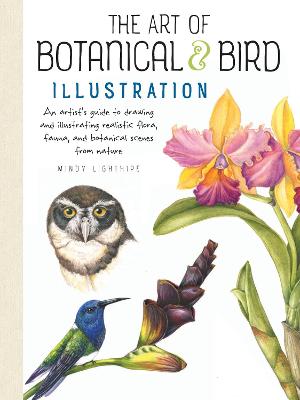Reviewed by annieb123 on
Walter Foster art and graphics publishing have a catalog which encompasses all types of graphic and mixed media arts as well as art history and culture. The Art of Botanical & Bird Illustration is a 144 page instruction and tutorial manual available in ebook and paperback formats. The author is an experienced artist and illustrator.
There was a lot to like here. I really like the author's calm and reassuring writing style. The photography and individual technical tutorials are well written and very well illustrated. The biological/botanical/anatomical information in the book is well presented and correct. She also emphasizes the importance of nomenclature and precision when drawing and illustrating plants. The book abounds with creative and useful tips for natural positioning and drawing botanical samples. I loved the tip about using floral water tubes and a third hand to hold botanical samples during the drawing process.
I also really liked that the author isn't a purist. It's clear that she's not a shill for any particular brand name. She shows what -she- uses and works with and leaves it up to the student to find methods and tools which work for them.
She even manages to sneak a little philosophy into the book without being preachy or strident at all. She mentions the use of reference photographs and that ethical artists will use stock photographs as reference guides but not slavishly copy them and claim them as original. (She says it in a much less confrontational manner). Intellectual theft and copying is so rife. I think her subtle message is both needed and timely.
There are many things to like about this book. I read it in one sitting and went back and worked on some of the introductory shading and shadowing exercises with a still life. My results weren't terribly impressive, but it's made me want to work on my drawing more rather than frustrating me into quitting. This is not a beginner book. It is, however, an inspirational book and one to grow with.
There is basically zero handholding/spoonfeeding. This is not a book to pick up if you've never held a pencil before. She does go over some basics of perspective and shading, but not nearly enough to get a beginner from a starting point to a position of confidence without a lot of (possibly insurmountable) frustration.
I received the electronic ARC of this book, so I can't speak to the quality of the physical book, but I'm assuming it's the same quality as the other Walter Foster tutorial titles.
Four stars, beautifully illustrated and a valuable resource.
Disclosure: I received an ARC at no cost from the author/publisher.
Reading updates
- Started reading
- Finished reading
- 24 January, 2018: Reviewed
